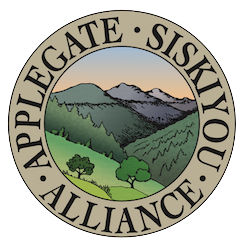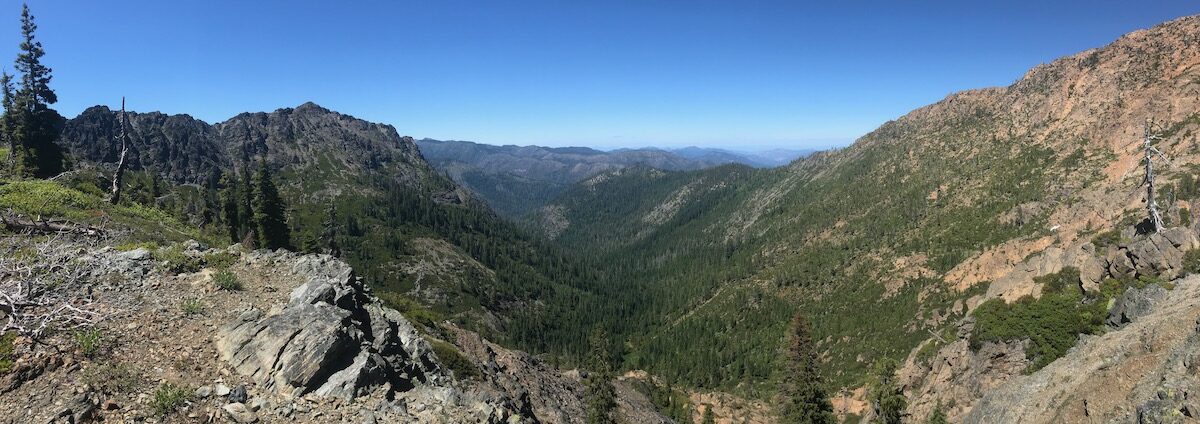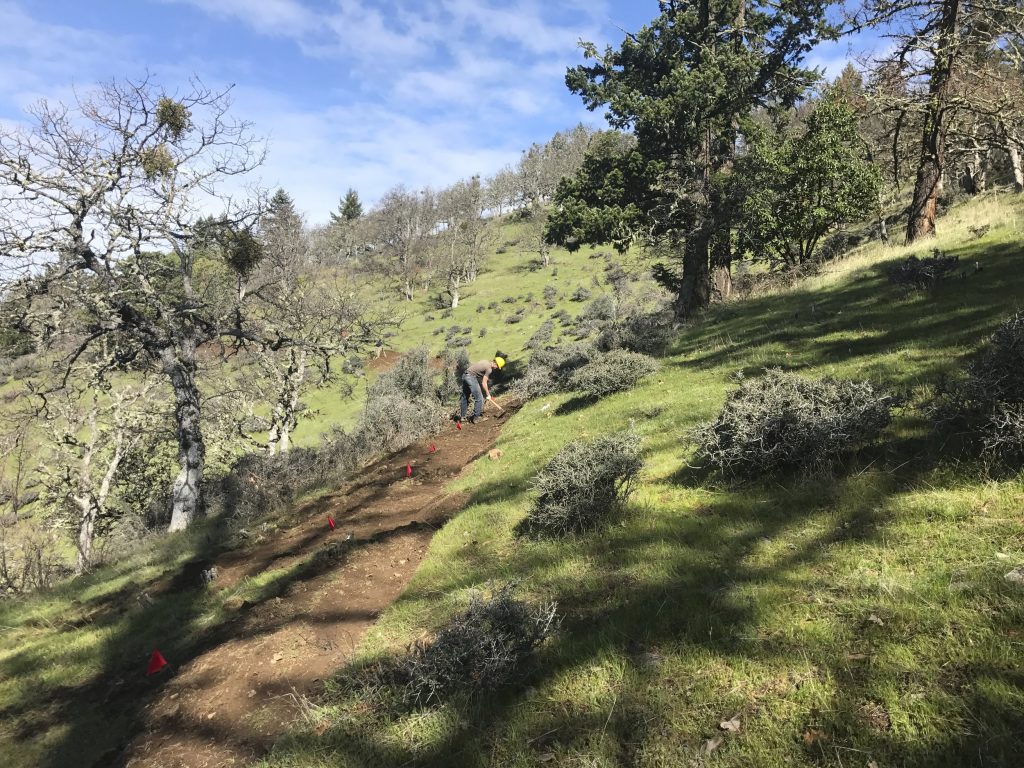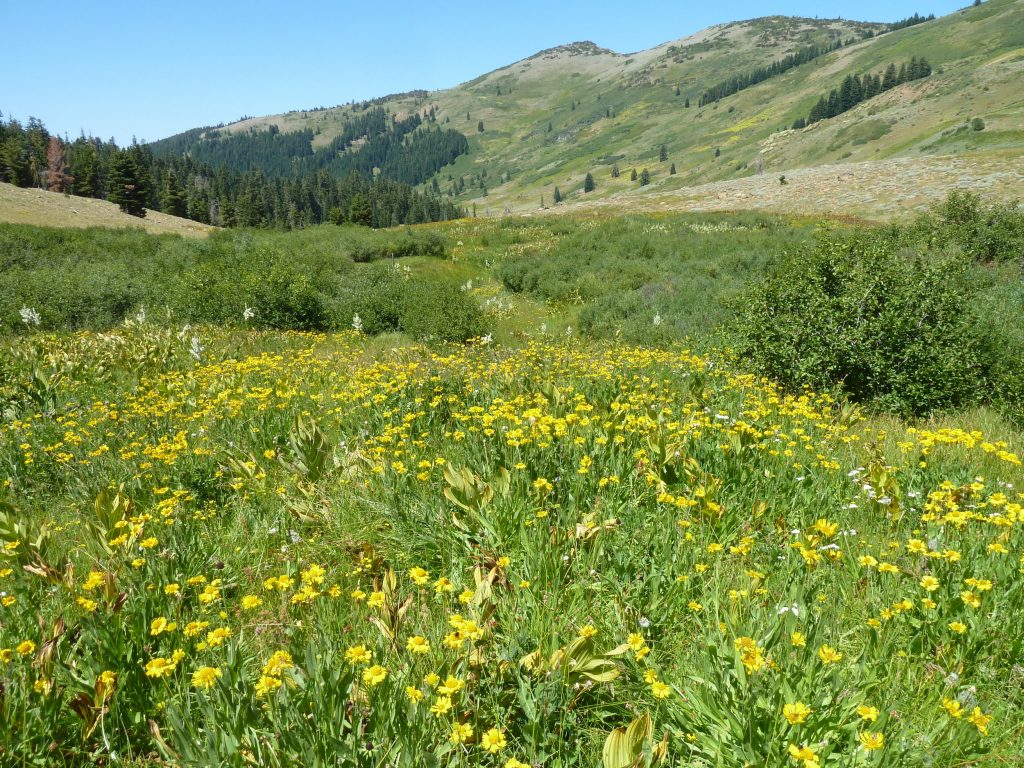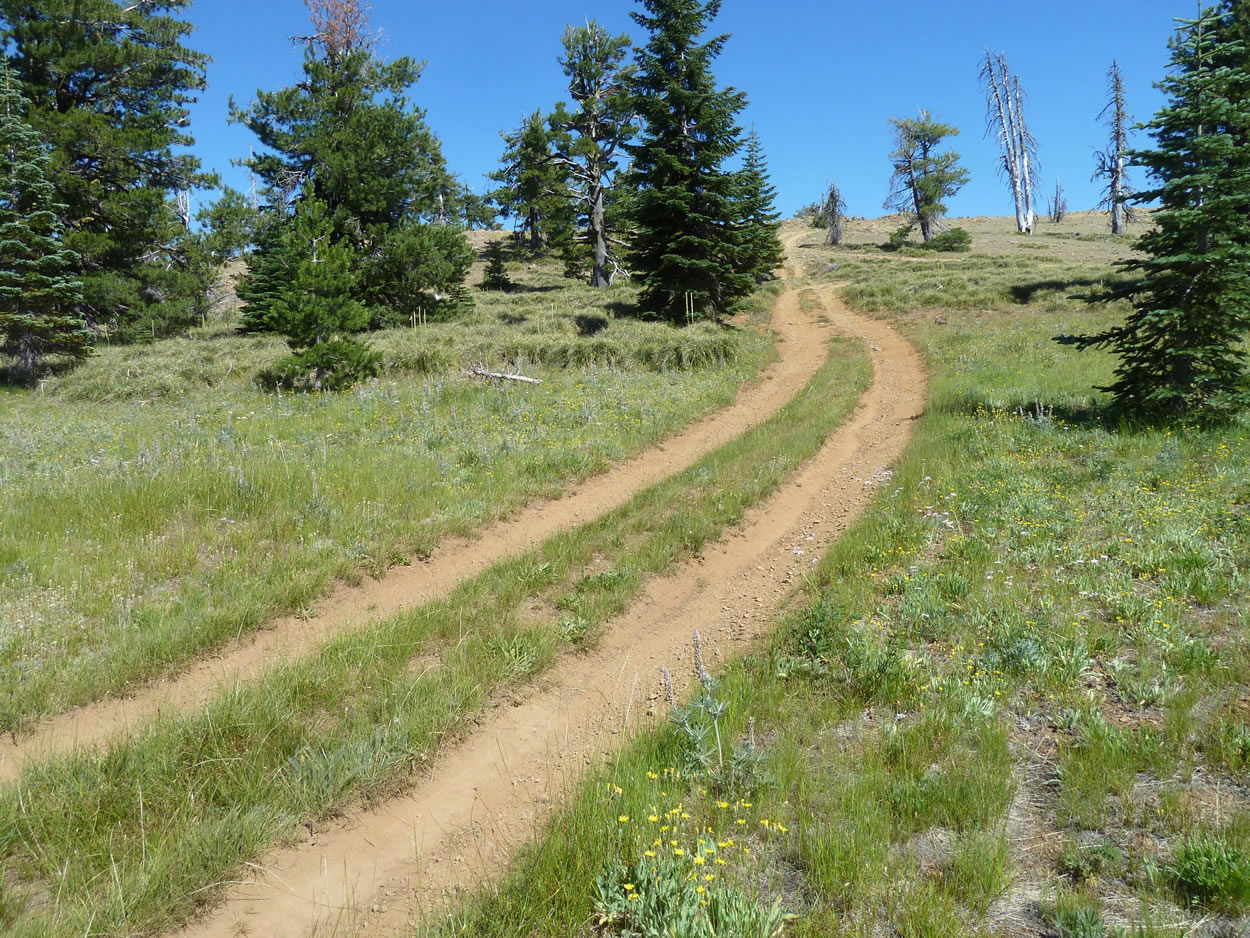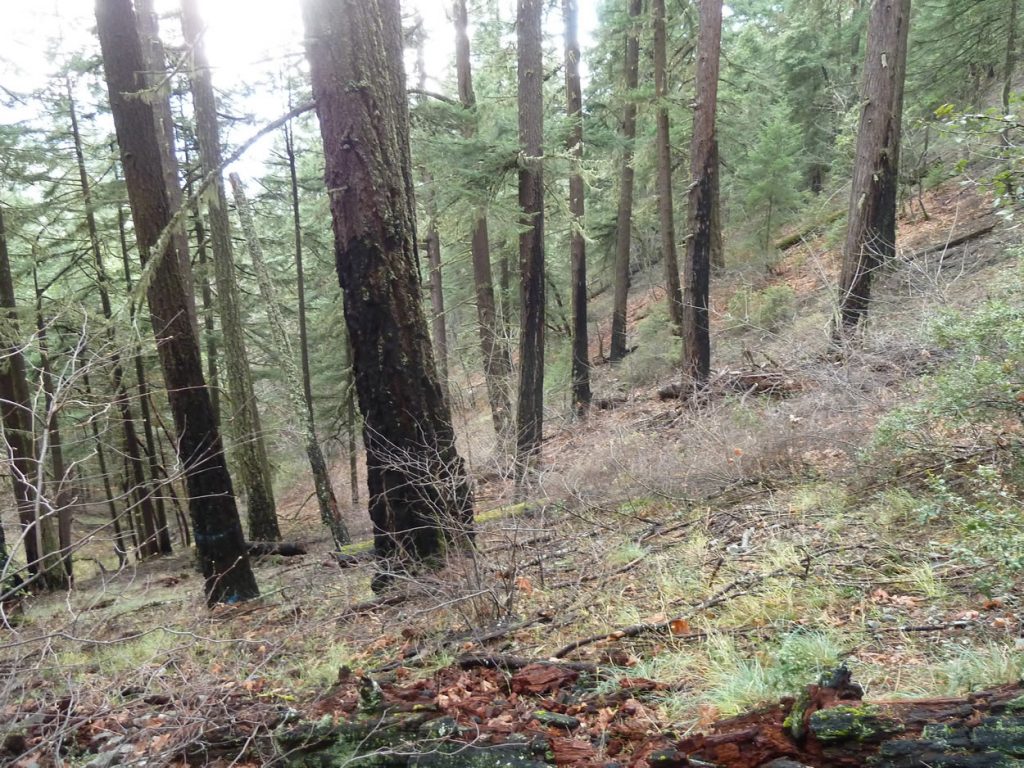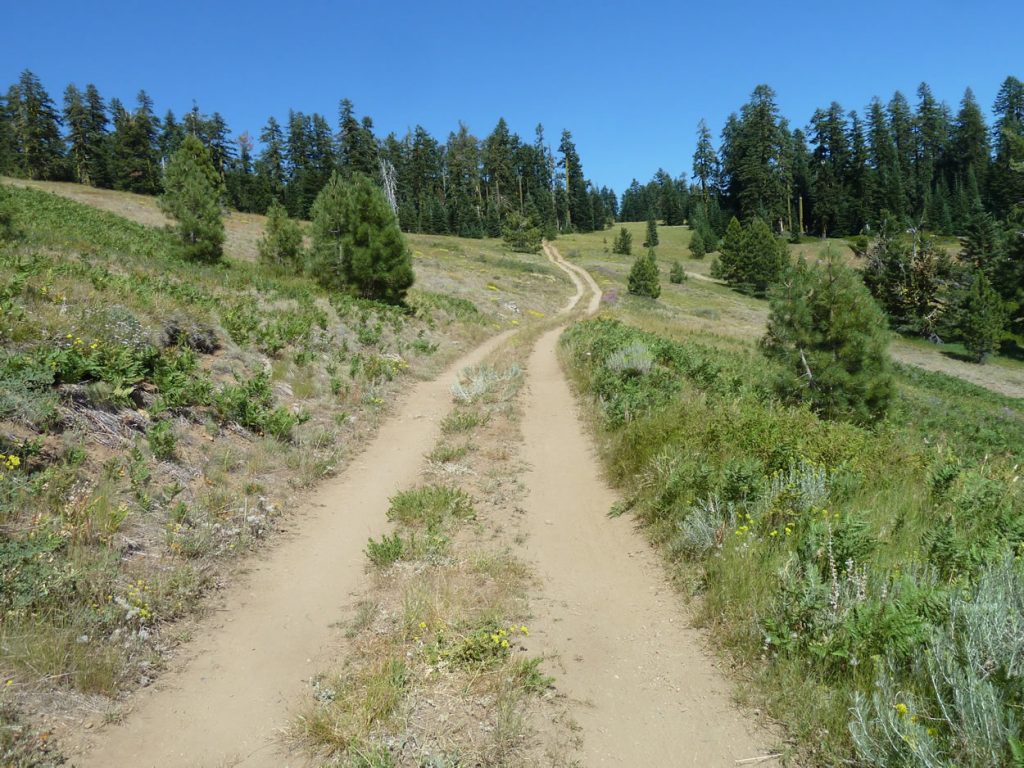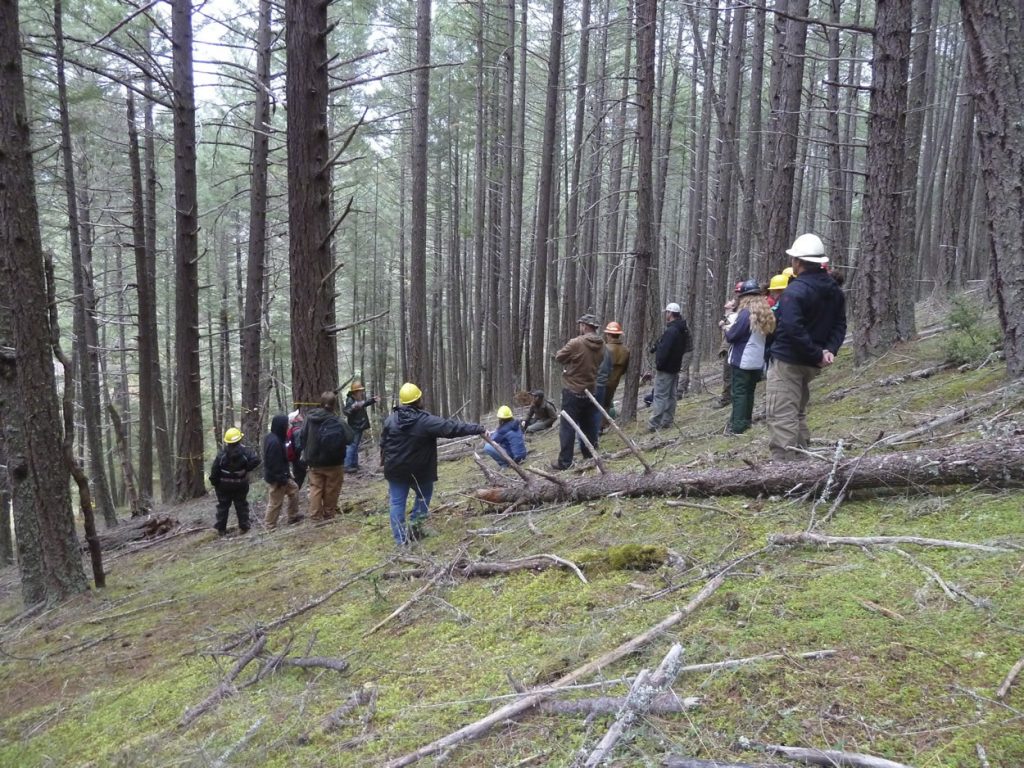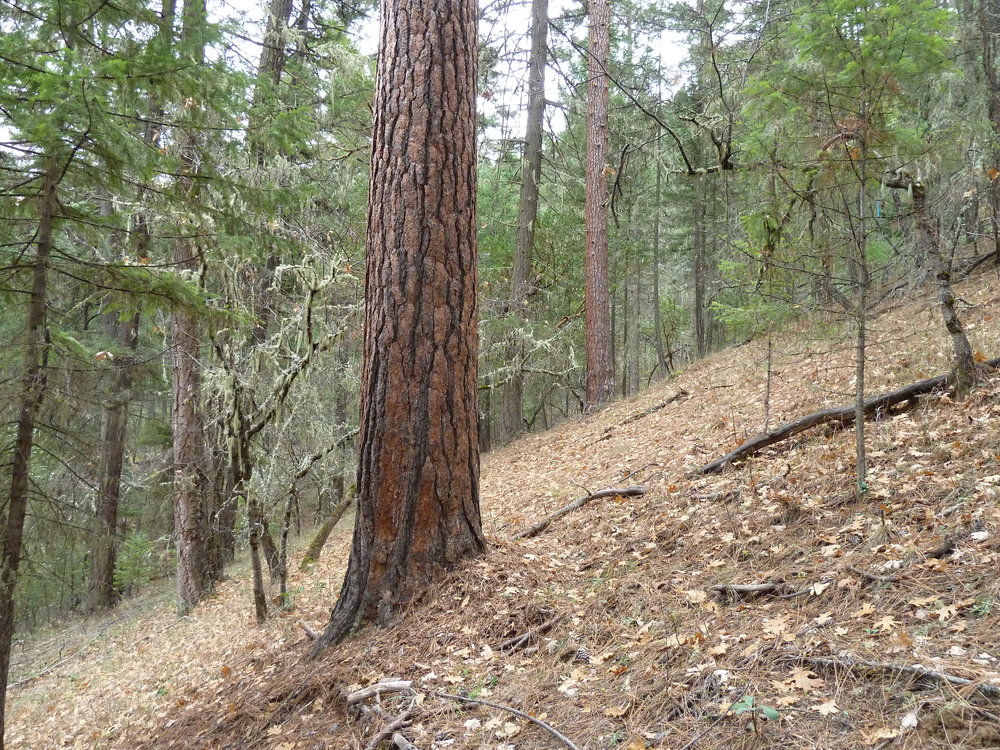Throughout the past year Applegate Neighborhood Network (ANN) has worked on numerous major campaigns to protect, restore and rewild the Applegate Valley and Siskiyou Crest. We are proud of our achievements in 2017 and look forward to doing even more in 2018.
Pickett West Timber Sale
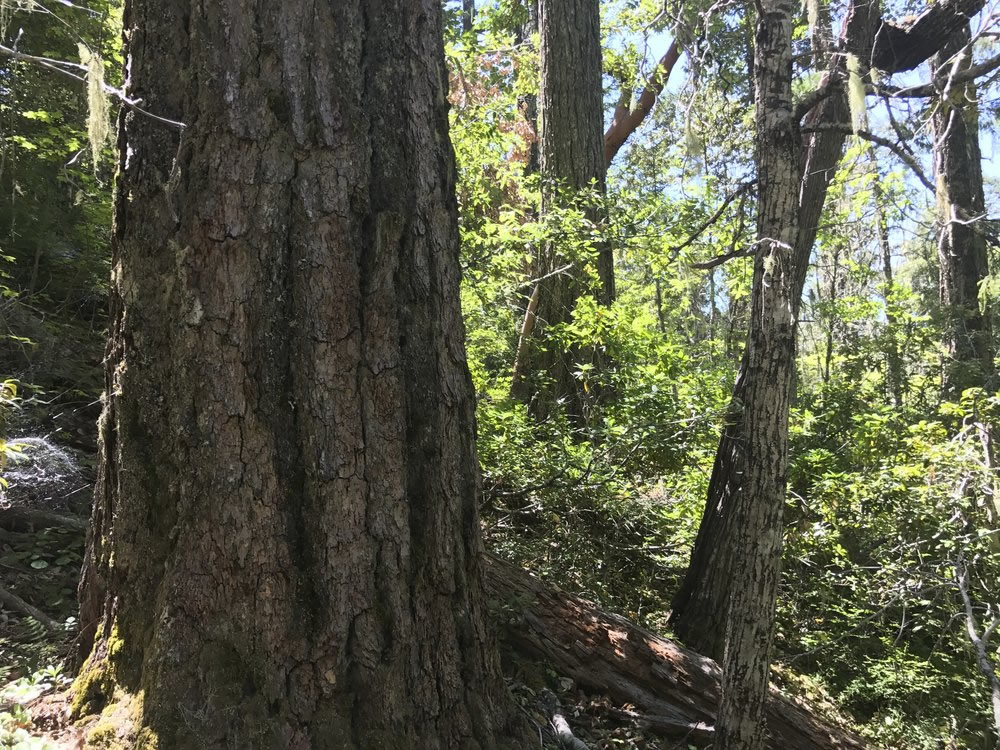
The BLM’s Grants Pass Resource Area proposed the Pickett West Timber Sale in late 2016. The project proposed extensive old-growth forest logging, with nearly half the timber sale involving units between 150 and 240 years old. The BLM also proposed new road construction, riparian logging and severe impacts to the proposed Applegate Ridge Trail.
The massive timber sale became a major focus of our work in 2017. The Pickett West Timber Sale extended across a 200,000-acre planning area, from the Wild and Scenic Rogue River near Galice and Hellgate Canyon, to the mountains surrounding Selma, Oregon, and large portions of the Applegate Valley near Wilderville, Murphy and North Applegate Road.
ANN took a leading role by monitoring units in the Applegate Valley, Illinois Valley and the Rogue Valley. We worked with Klamath Forest Alliance and the Deer Creek Association to coordinate monitoring efforts across southern Oregon. ANN documented high priority red tree vole habitat on the Rogue River and outside Selma, Oregon in beautiful old-growth forest proposed for logging. We also documented road construction and old forest logging that would irreparably alter the proposed route of the Applegate Ridge Trail.
We publicized our findings and advocated for withdrawal of problematic units. We also utilized our monitoring efforts to write detailed public comments and administrative protests. We provided reports to Fish and Wildlife detailing our monitoring results and documenting inaccurate Northern spotted owl habitat designations. In many units we documented unacceptable impacts to the Northern spotted owl’s main food source, the red tree vole.
The BLM canceled numerous of the worst Pickett West units on the Rogue River, dropping a few hundred acres from the project. Unfortunately, the BLM then sold a reduced timber sale in the Rogue River area, called Pickett Hog. This sale is currently on hold until ANN’s administrative protest, and the 28 other administrative protests they received for the original Pickett West Timber Sale, are resolved. ANN will keep you posted on the administrative protest process.
In the meantime, Fish and Wildlife ordered the BLM to review many of the Pickett West units ANN identified as problematic in the mountains around Selma, and the BLM ended up withdrawing the entire Selma portion of the Pickett West Timber Sale, including 1,584 acres of old-growth forest. Although a spectacular victory for local environmentalists, rural residents, and scientists who opposed this sale, BLM has, unfortunately, initiated a Scoping Notice on a greatly reduced and new timber sale in the Selma area called Clean Slate. Although reduced in size, the Clean Slate Timber Sale still has units containing old-growth forests. The BLM is accepting public comments about the Clean Slate project until December 8, 2017.
Finally, in the Applegate Valley, the BLM is proposing to move forward with the original Pickett West Timber Sale planning by implementing what they are calling the Savage Murph Timber Sale near Wilderville, Murphy and North Applegate. ANN will continue working to stop the old-growth logging and road building proposed in the Savage Murph Timber Sale in 2018. We are committed to detailed, site-specific, on-the-ground timber sale monitoring and documentation of what is truly at stake should these projects go through.
Siskiyou Crest Post-Fire Logging
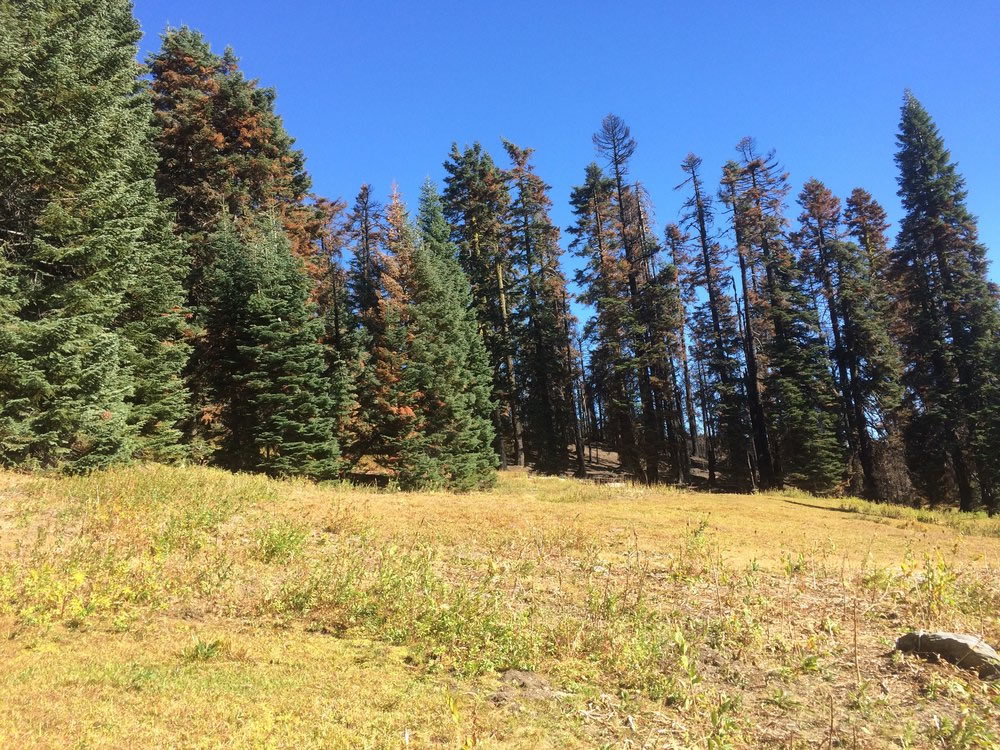
The Gap Fire burned over 30,000 acres on the southern slopes of the Siskiyou Crest in the summer of 2016. The Gap Fire burned through the Klamath National Forest (KNF) to the spine of the Siskiyou Crest, near Condrey Mountain. In the high country around Condrey Mountain the fire burned in a natural, mixed-severity fire mosaic, leaving green forests, lush high mountain meadows, headwater springs, and burned snag forests interspersed in a diverse patchwork of habitats.
On the south slope of Condrey Mountain, near the summit of the Siskiyou Crest, the KNF proposed to log fire-affected, old-growth forest at the headwaters of Buckhorn and Middle Creek. Although just barely outside the Applegate Watershed, the proposed clear-cut, post-fire logging would have impacted the Siskiyou Crest and the important habitat connectivity corridor that connects the Coast Range to the Cascade Mountains and the Great Basin. This connectivity corridor feeds and maintains the continued outstanding biodiversity of the Applegate Valley.
ANN worked with the Klamath Forest Alliance as the only environmental organizations to conducted on-the-ground field monitoring of the eighteen, high-elevation logging units and new road construction proposed near Condrey Mountain and Dry Lake Mountain.
We publicized our findings and utilized our monitoring results to inform our extensive public comments on the project, and four units near Dry Lake Mountain were immediately withdrawn. The KNF approved the remaining fourteen units and new road construction around Condrey Mountain. ANN, Klamath Forest Alliance and others responded with detailed administrative protests, putting the project on hold. The KNF resolved our administrative protest by withdrawing the remaining fourteen units and 450 acres of high elevation forest on the Siskiyou Crest from the timber sale proposal. We are very proud of this victory for the Siskiyou Crest!
Upper Applegate Watershed (UAW) Restoration Project
Over the last two years ANN has worked on a large, collaborative project in the Upper Applegate Watershed with both the BLM and Forest Service called the Upper Applegate Watershed (UAW) Restoration Project. The project is being implemented through the Applegate Adaptive Management Area and has included extensive public involvement. Members of ANN have been at all of the many public meetings and field trips associated with UAW project planning. We have attended these workshops, field trips and planning meetings to ensure conservation issues are addressed in the project. We also provided detailed public comment during the scoping period.
The UAW collaborative project is working towards the development of an Environmental Assessment (EA) before a final project is approved. Currently, ANN supports many of the proposals and has steered the agencies away from ecologically sensitive areas and towards responsible land management practices. Proposals we support include: new non-motorized trail development, large-scale prescribed fire, fuel reduction maintenance around rural residential communities, pollinator habitat restoration, ecologically-based commercial thinning in managed stands and noxious weed removal. We are opposing a handful of commercial logging units located within roadless areas, and we are strongly opposing numerous new OHV trails also being proposed in roadless areas. If new OHV trails are approved through this project it will no longer meet the intended “purpose and need” of the project, which has been focused on habitat restoration. New OHV trail construction in roadless areas is the antithesis of habitat restoration.
Middle Applegate Timber Sale
ANN has participated in the early stages of project planning with the BLM on their proposed Middle Applegate timber sale. The project area extends from Bishop and Forest Creeks, to Thompson Creek and across the Middle Applegate watershed, over to Slagle Creek. ANN has attended numerous community meetings and coordinated with local community members to advocate for implementation of the Applegate Adaptive Management Area and meaningful community involvement in the planning process. We are advocating for protection of the Wellington Butte Roadless Area, old forest habitats, and the proposed Applegate Ridge Trail corridor. We appreciate the efforts of Applegate community members who have attended the meetings and voiced their support for conservation during the early planning stages for the Middle Applegate timber sale project. ANN will keep you posted if there are any further developments.
OHV Monitoring

ANN has continued to monitor unauthorized and damaging OHV activities in the Applegate Valley and on the Siskiyou Crest. Over the course of the last year, ANN has successfully advocated for the obliteration of one OHV trail on BLM land near Anderson Butte. We have also worked to include one unauthorized OHV trail obliteration project into the UAW Restoration Project.
OHV Categorical Exclusion
In April 2017, the Medford District BLM approved a Categorical Exclusion to avoid environmental analysis and public comment on the “maintenance” of 65 miles of unauthorized OHV trails in the Forest Creek, China Gulch and so-called Timber Mountain/John’s Peak area. BLM’s goal is to legitimize these illegally created, unauthorized OHV routes, mask the environmental impacts for upcoming environmental analysis, and cut the public, including residents of the Applegate Valley who are negatively impacted by the project, completely out of the process. The Categorical Exclusion excludes the requirement that land managers conduct a thorough review of the cumulative environmental and social impacts. It also excludes the requirement that land managers provide a public comment period and address the concerns, science, and information identified in the public comment process.
The 65 miles of OHV trails in question are highly erosive, user-created routes that have never been subjected to environmental review or approved through a legal NEPA process. The unauthorized trails impact rare plant habitat, wildlife habitat, hydrology, water quality, soils and a myriad of other forest resources. They also encourage and facilitate private land OHV trespass by officially maintaining routes that include or continue onto adjacent private lands. These private lands include the homes and backyards of many Applegate Valley residents.
Although the BLM approved the project with no public comment, ANN promptly filed an administrative protest, demanding the project be withdrawn and that BLM conduct Travel Management Planning as required in the 2016 Resource Management Plan.
Unfortunately, BLM denied our protest and intends to move forward with OHV trail maintenance in the area. ANN will continue to watch the BLM, document the impact of OHV use and advocate for closure of damaging OHV trails. For now the BLM can maintain these user-created trails but they have not been officially authorized. We are gathering evidence and stand ready to oppose these illegal OHV trails as soon as BLM proposes them for approval in the future.
Applegate Grazing Complex
ANN has been monitoring grazing allotments on the Siskiyou Crest throughout the summer of 2017. We are documenting the ecological impact of public land grazing in preparation for the upcoming Applegate Grazing Complex allotment renewal in 2020.
The Forest Service will be updating management plans for grazing allotments in the Applegate watershed, a task that has been neglected for many decades. Some of these grazing allotments have not had an updated management plan since 1956! Our goal is to document impacts to water quality, soils, wildlife habitat, pollinator habitat, botanical resources, and designated botanical areas to inform the planning process. We are monitoring four grazing allotments that cover large portions of the Siskiyou Crest from Dutchman’s Peak to Carberry Creek.
ANN coordinates grazing allotment monitoring on the Siskiyou Crest with our conservation allies at the Project to Reform Public Land Grazing in Northern California. To learn more about public land grazing issues on the Siskiyou Crest check out this summer’s report: The Project to Reform Public Land Grazing in Northern California: 2017 Siskiyou Crest Monitoring Report
Fire Monitoring, Education & Advocacy
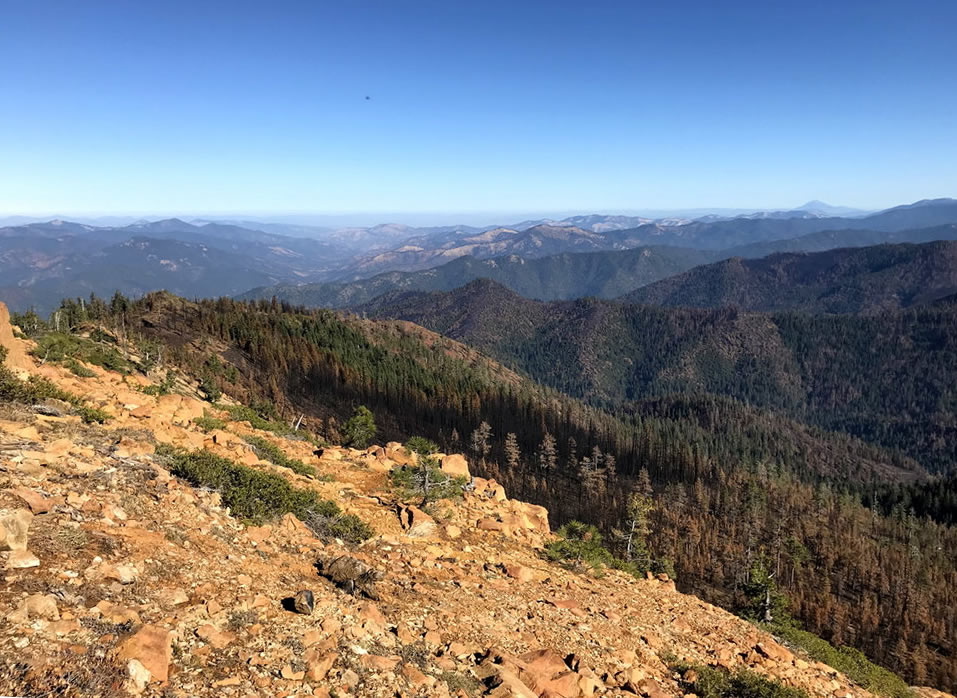
The Miller Complex Fires defined the summer of 2017. Combined, the fires burned nearly 40,000 acres in the Applegate watershed from mid-August to the first fall snow. The fires burned in a natural, mixed-severity fire mosaic and provided significant ecological benefit to the forests and wildlands of the Applegate watershed
While the fires were burning, ANN tracked their progress and informed fire managers of important ecological considerations within the fire area. We also advocated for responsible fire management, effective community protection and the protection of roadless habitats from fire suppression impacts.
ANN has been monitoring the fires and fire suppression activities in the Miller Complex. We are currently preparing the Miller Complex Fire Report in order to share our findings with local conservationists, residents, scientists, politicians and land managers. This report will explore the fire effects, fire suppression impacts, and long-term implications of the Miller Complex Fire.
ANN worked hard in 2017 to educate the public about the important role fire plays in the Siskiyou Mountains. We are using the Miller Complex Fire to explore the region’s fire ecology and pyrodiversity.
Thankfully, the Forest Service is not proposing post-fire logging in the Applegate Valley portions of the Miller Complex Fire. This is a huge victory for our diverse, fire-adapted Siskiyou Mountain forests and the post-fire environment, and it will provide an opportunity to research and monitor the natural process of renewal following wildfire. ANN intends to utilize the Miller Complex Fire area as a living laboratory. We hope to educate both the public and federal land managers regarding the benefits of wildfire in the Siskiyou Mountains.
What lies ahead for 2018?
In 2018, ANN will continue working for the community and the environment of the Applegate Valley. We will continue our on-the-ground monitoring efforts and will advocate for conservation in federal land management planning. We expect the Savage Murph and Middle Applegate Timber Sales will be a high priority in 2018, along with ongoing OHV monitoring, monitoring of grazing allotments and collaboration in the UAW Restoration Project. On the Siskiyou Crest, ANN will oppose any post-fire logging proposed in the Abney Fire on Klamath National Forest lands. We will also continue providing information to the public regarding fire ecology and wildfire management. ANN is the only conservation organization focused solely on the needs of the Applegate Valley, the Siskiyou Crest and the important connectivity habitat that the region provides. Please consider supporting our work with a generous donation. Your support is vital to the wildlife and wildlands of the Applegate Valley!
